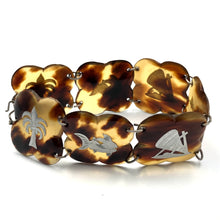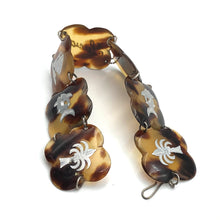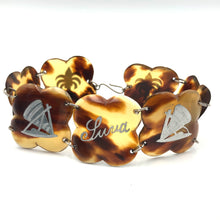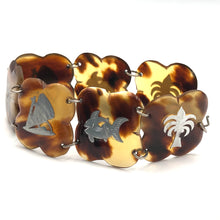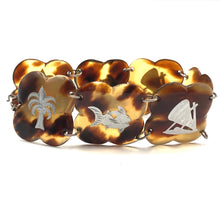
Victorian piqué tortoise shell bracelet, inlaid with silver medallions, circa 1870. Weight: 10.2g. The bracelet has scenes from Egypt and the name "Lucia" (meaning "light") inlaid in the shell of the Hawksbill turtle. This lost technique was called "piqué" and was was used from the 16th to the 19th century, but peaked during the 1860s and 1870s. As a result of the exhibition of Egyptian treasures at the Exposition Universelle in 1867, Egyptian motifs and symbols became hugely fashionable. As the 1860’s also marked the apex of tortoiseshell piqué jewellery, this bracelet is an excellent example of a fashionable bracelet of the period. The piqué technique was first introduced in England in the seventeenth century by the Huguenots and the motifs were inlaid by hand. With the introduction of machine-made pique in Birmingham in 1872 the designs lost their fine detail and became more geometrical and rigid. This decline in quality led to the demise of the piqué art form.







